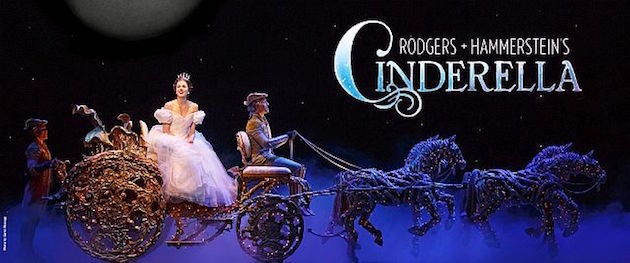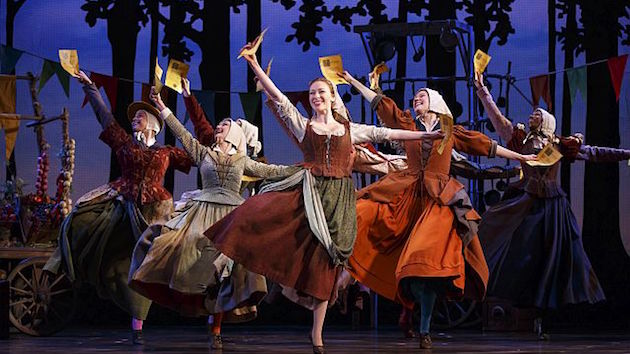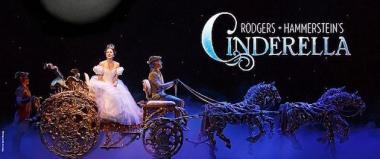
A lot has happened to poor Cinderella over the ages. Duan Chengshi first told the story of a girl, her slipper, and a royal wedding in “Ye Xian” some 1,200 years ago. Charles Perrault reimagined her in his yarn of 1697, and the Brothers Grimm relayed her adventure in their 19th-century folk-tale anthology. And the same could be said about Rodgers & Hammerstein's musical adaptation of the classic.
The version coming to the SHN Orpheum, May 3-8, is only the latest adaptation of the original material. Rodgers + Hammerstein’s CINDERELLA was a made-for-television show, first seen in 1957 on CBS, with 22-year-old Julie Andrews in the title role. Since then, every production has had some changes and the current one, appearing on Broadway two years ago, and now coming to San Francisco, is no exception.
Traditionally, the character of Cinderella is a passive one, an unfortunate, humiliated half-orphan triumphing at the end through magic. Sondheim's Into the Woods is among the exceptions, where Cinderella is a person of her own, resisting the Prince beyond just running away, and discovering that “no one is alone.” The Cinderella of the new R&H version is far different from the Cindy of old.
You will see a contemporary, activist, righteous young woman, telling the weak-kneed Prince to “open your eyes to what's happening in your kingdom,” and prompting the New York Times' Ben Brantley in his review to wonder whether “she should be renamed Che-erella.” The Prince's parents are gone here, and Sebastian, the regent, is manipulating the Prince to oppress and rob the people.
There is also a new character in the musical, the rebel Jean-Michel, in love with stepsister Gabrielle ... and seeking to overthrow the government.
And yet, the changes in the score are just as important as those in the plot. Playing in the pit, as usual with touring productions, local musicians are hired - a dozen playing with the traveling conductor, assistant conductor, and keyboardist. While keeping the hits of the musical — “In My Own Little Corner,” “Do I Love You Because You're Beautiful?” — some numbers are cut and some other music added.
Theodore S. Chapin, president and executive director of the Rodgers & Hammerstein Company, says the idea for the new version came out of discussions between him and Robyn Goodman, initiated because “No one has ever figured out how to create a Broadway-worthy version of the R&H Cinderella from the original TV special ... and we talked about creating a Cinderella who was more in charge of her own fate, a Prince with some real problems.”
The creative team for the project included Douglas Carter Beane (writing a new book for the show), David Chase (working closely with Bruce Pomahac who was director of music at R&H), Mark Brokaw, and Josh Rhodes.
“Several songs were added,” says Chapin, “and brilliantly integrated so many audience members have no idea what came from the original 1957 telecast and which came from other sources. “The Loneliness of Evening” was cut from South Pacific (but used in the 1965 TV remake of Cinderella), “There's Music in You” came from a 1950 movie Main Street to Broadway (but used in the 1997 TV remake of Cinderella), and so on.
Asked for an example of reworking a “borrowed” song, Chapin said:
Me, Who Am I?” is a song at written for 1953's Me and Juliet, which was a backstage play-within-a-play show. Only its music ended up in that show, but David Chase and Bruce Pomahac figured out how to create an opening song introducing the Prince in which he questions himself."
Starting on Broadway two years ago, the new R&H Cinderella is concluding the current national tour with its last stop in San Francisco. The Hollywood Reporter review said of the production: “The sprinkling of contemporary anachronisms in the dialogue supplies some fresh sass and snark without pushing too hard in a treatment that’s surprisingly traditional on most fronts.”


